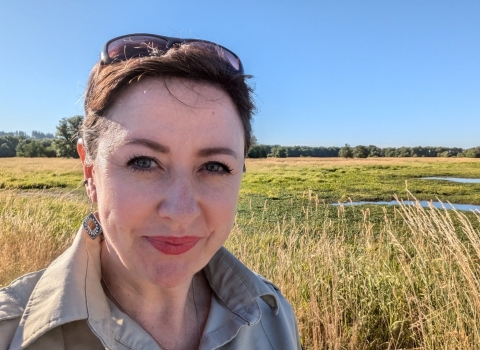The U.S. Fish and Wildlife Service has released the draft recovery plan for the endangered Texas golden gladecress, an annual plant that occurs on private and state-owned lands within San Augustine, Sabine, and Nacogdoches counties, Texas. The overall draft recovery strategy involves building and maintaining partnerships to conserve the plant’s habitat. A 30-day public comment period will close on Sept. 3, 2024.
In 2013, Texas golden gladecress was federally listed as endangered under the Endangered Species Act with four units of critical habitat comprising approximately 1,353 acres in San Augustine and Sabine counties, Texas. This herbaceous plant is confined to Weches outcrops, treeless glade areas with poorly drained soils. The outcrops’ geology, soil and climate create habitats that support plants species found nowhere else in the world.
“The Service is extremely grateful for ongoing conservation efforts of the Weches glades that support this species by Texas Parks and Wildlife Department, Texas Department of Transportation, county botanists and Mercer Arboretum and Botanical Gardens,” said Amber Bearb, Fish and Wildlife Biologist with the Service’sTexas Coastal and Central Plains Ecological Services Field Office. “Current and future management of the Weches glades not only supports healthy habitats but also benefits the rare Texas golden gladecress. Recovery efforts will only be possible with partners and local support.”
Texas golden gladecress belongs to the mustard family. When not blooming or fruiting, the small plant can be hard to spot and grows no taller than four inches (ten centimeters) in height. It has smooth, rounded lobed leaves and bright yellow flowers.
“It’s a unique plant found in unique glade habitats,” said Bearb. “Glades shift from being quite wet and ponding to very dry and arid—all within the plant’s life cycle.”
Texas golden gladecress is part of the ephemeral wetland plant community found seasonally on Weches outcrops. The plant emerges in early winter during cool and extremely wet conditions. In late winter, its flowers bloom, and by early spring, its seeds disperse. Each summer, warming temperatures dry out these glades, and the Texas golden gladecress withers away.
Recovery plans are not regulatory. Rather they provide both a framework for guiding a species’ recovery and the criteria we expect will indicate that federal protection is no longer necessary. Working with partners, including private landowners and land managers, the Service uses a range of conservation tools to recover threatened and endangered species to ensure that they can survive on their own in the wild.
Specific draft recovery plan objectives include conserving the Texas golden gladecress, increasing habitat management, collecting and preserving seeds, engaging with landowners on habitat conservation, monitoring the species annually, studying the life history of the species, and surveying for additional populations within glade habitats.
An electronic copy of this draft recovery plan is available on the Service’s website: ecos.fws.gov/ecp/species/8339. The Service encourages the public, federal and state agencies, Tribes and other stakeholders to review the draft recovery plan and provide comments. The Service will consider comments received by Sept. 3, 2024.




